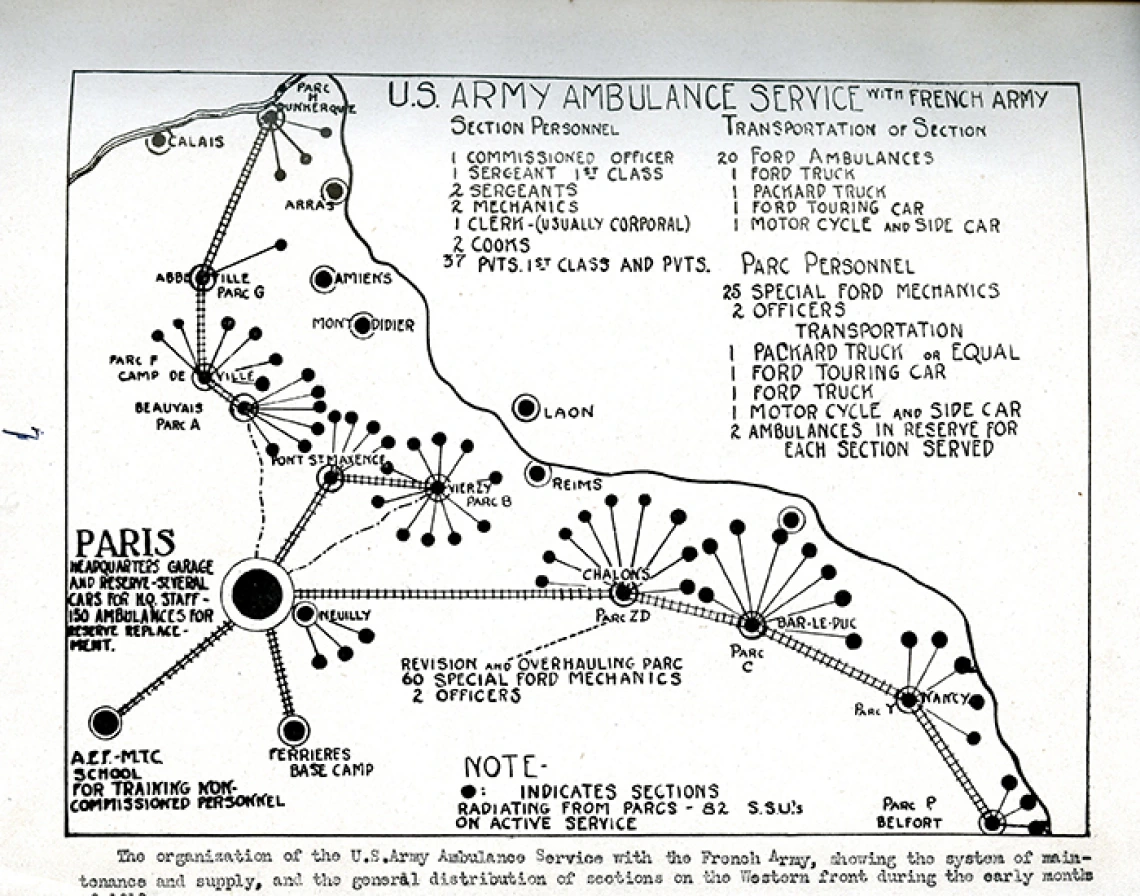Official Report of the Chief of the United States Army Ambulance Service with the French Army, to the Surgeon General of the Army

US Army Ambulance Map with the French Army of the services provided in France
Collection area: Political Affairs
Collection dates: 1919
This original typescript relates the history of the Ambulance Service with the French Army on the Western Front, during WWI. A signed introduction by Col. Percy L. Jones, Paris, April 15, 1919, states that the report is in compliance with instructions given by the Surgeon General, Nov. 27, 1918. Some of the chapters discuss organization; instruction; equipment; evacuation; morale activities; demobilization; and their role in the Battle of the Argonne in 1918. Diagrams illustrate the relationship of the USAAS with the French Army, and maps show zones for the movement of supplies and the wounded. Brief historical summaries of the individual units list statistics such as the American places of origin, many of which were universities; officers' names; fronts and campaigns served on; names and causes of ambulance personnel taken ill, injured, or killed; and commendations. A full-plate photograph depicts a new superior French-built ambulance known as the "American Field Service Type."
A gilded leather name-plate inside the front cover credits both Col. Percy L. Jones and Lt. Col. William McFarland for the report.
The United States Army Ambulance Service, also known as the USAAS, was created by presidential order May 18, 1917, for the duration of the "existing emergency." It incorporated the civilian volunteer units already in France: the American Field Service and the American Red Cross Ambulance Service. Col. Jones was the commanding officer; Lt. Col. McFarland was the executive officer. An included copy of the demobilization orders gives that date as Jan. 24, 1919.
A collection guide explains what's in a collection. New to using our collections? Learn how to use a collection guide.
Collection guideAccess this collection
Visit us in person to access materials from this collection. Our materials are one-of-a-kind and require special care, so they can’t be checked out or taken home.
How to cite
Learn how to cite and use materials from Special Collections in your research.
